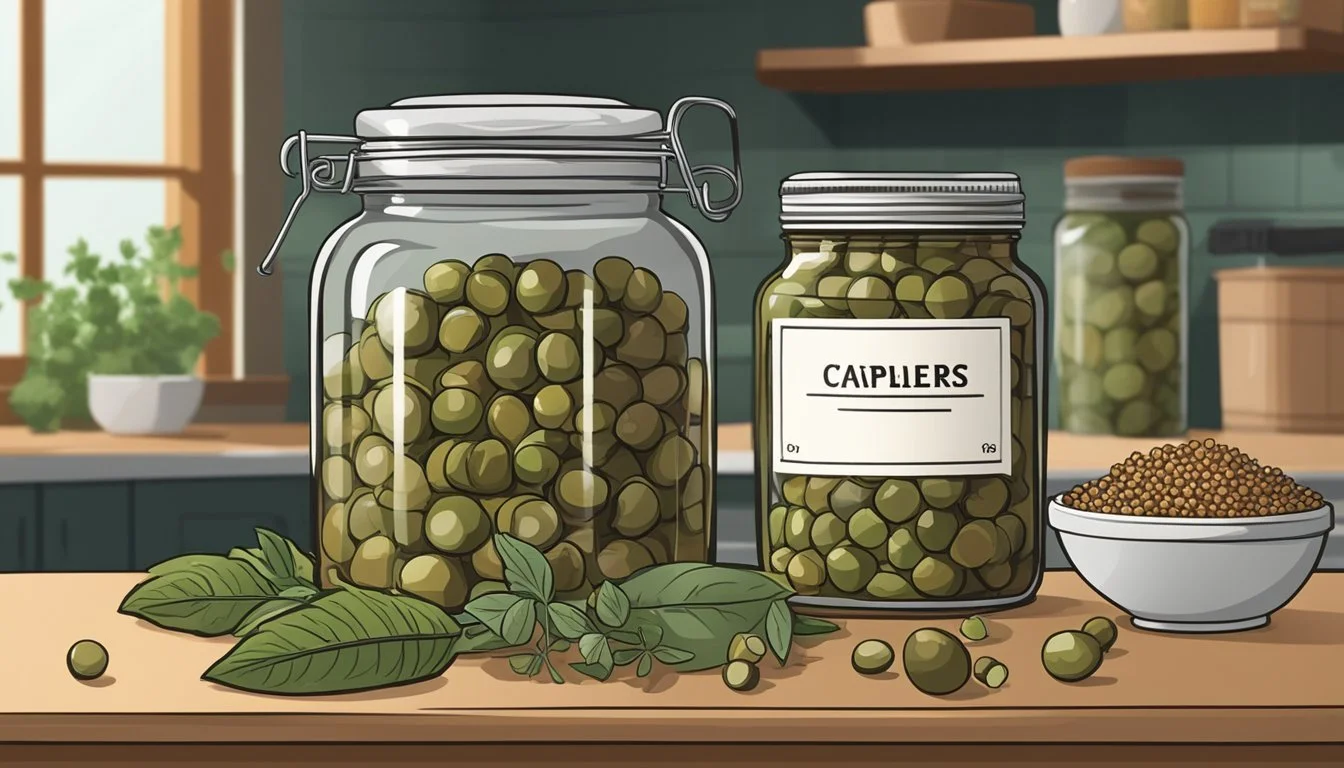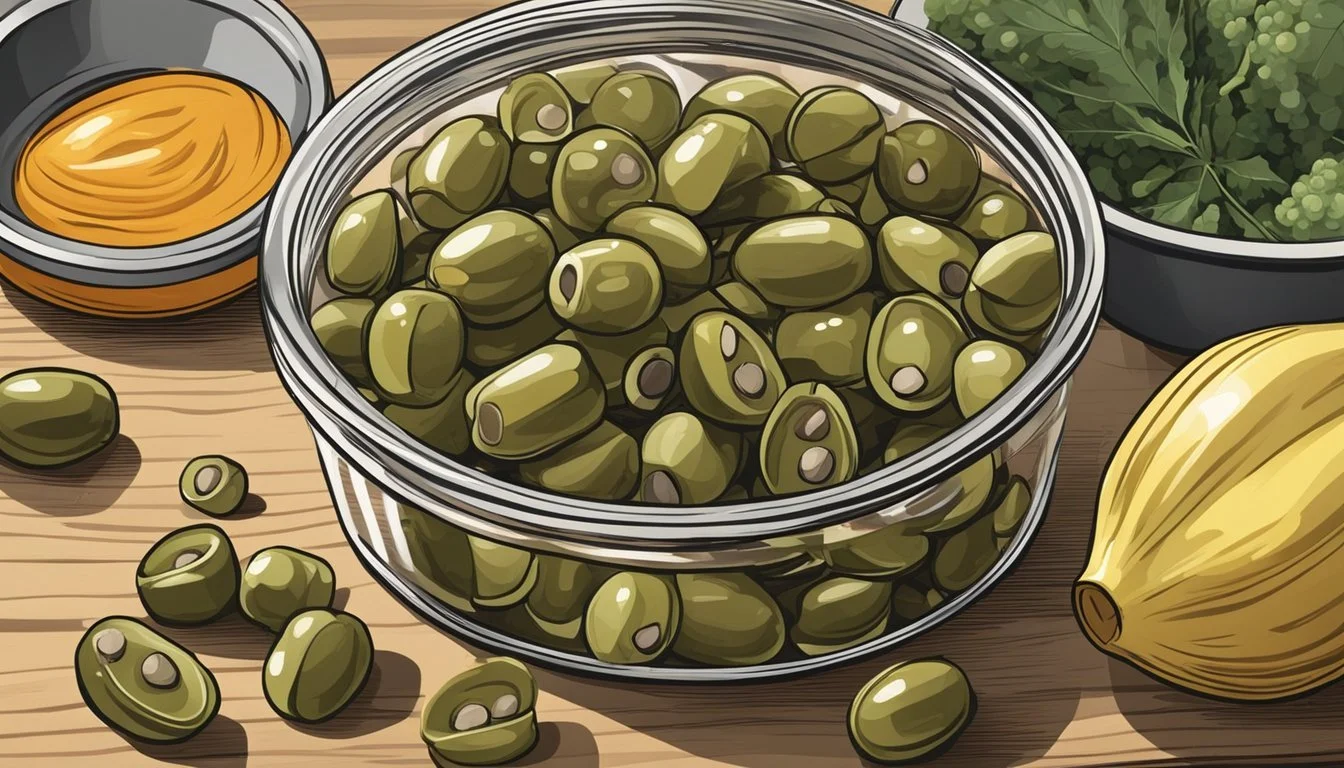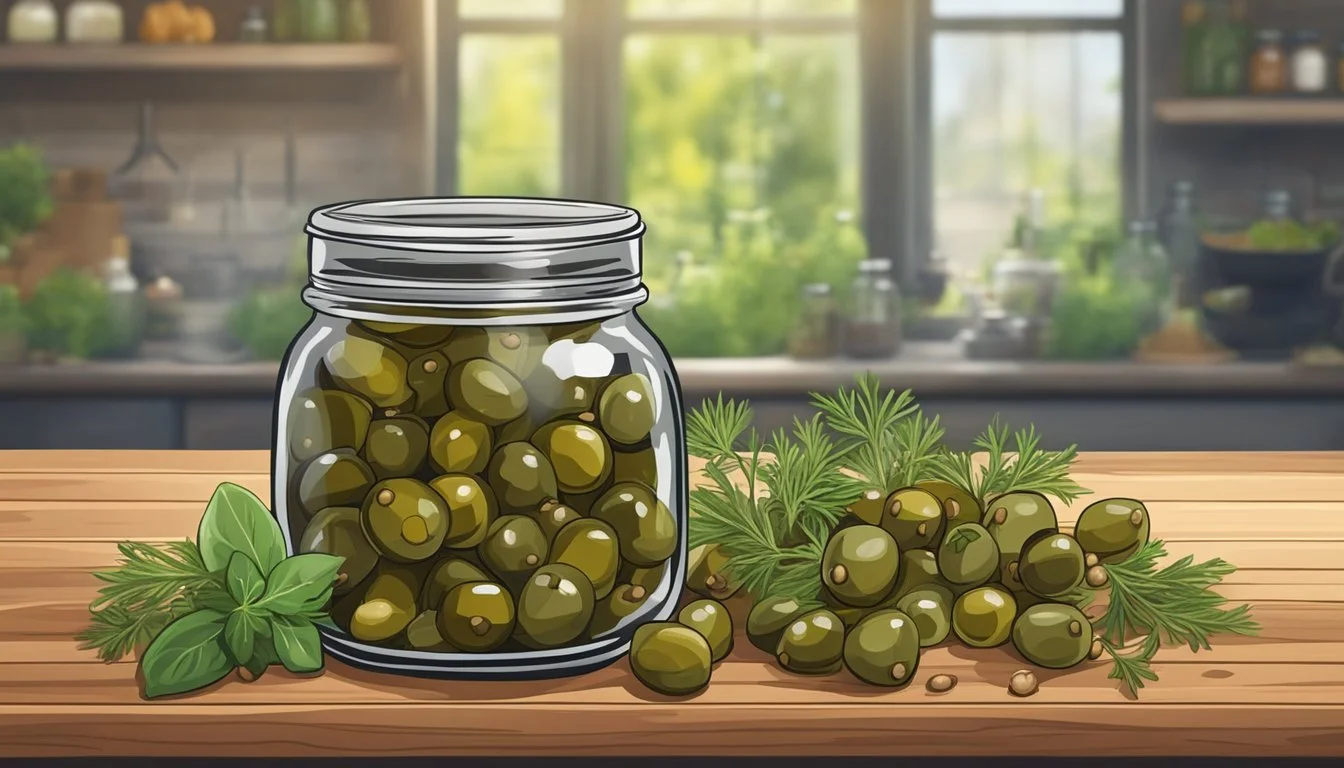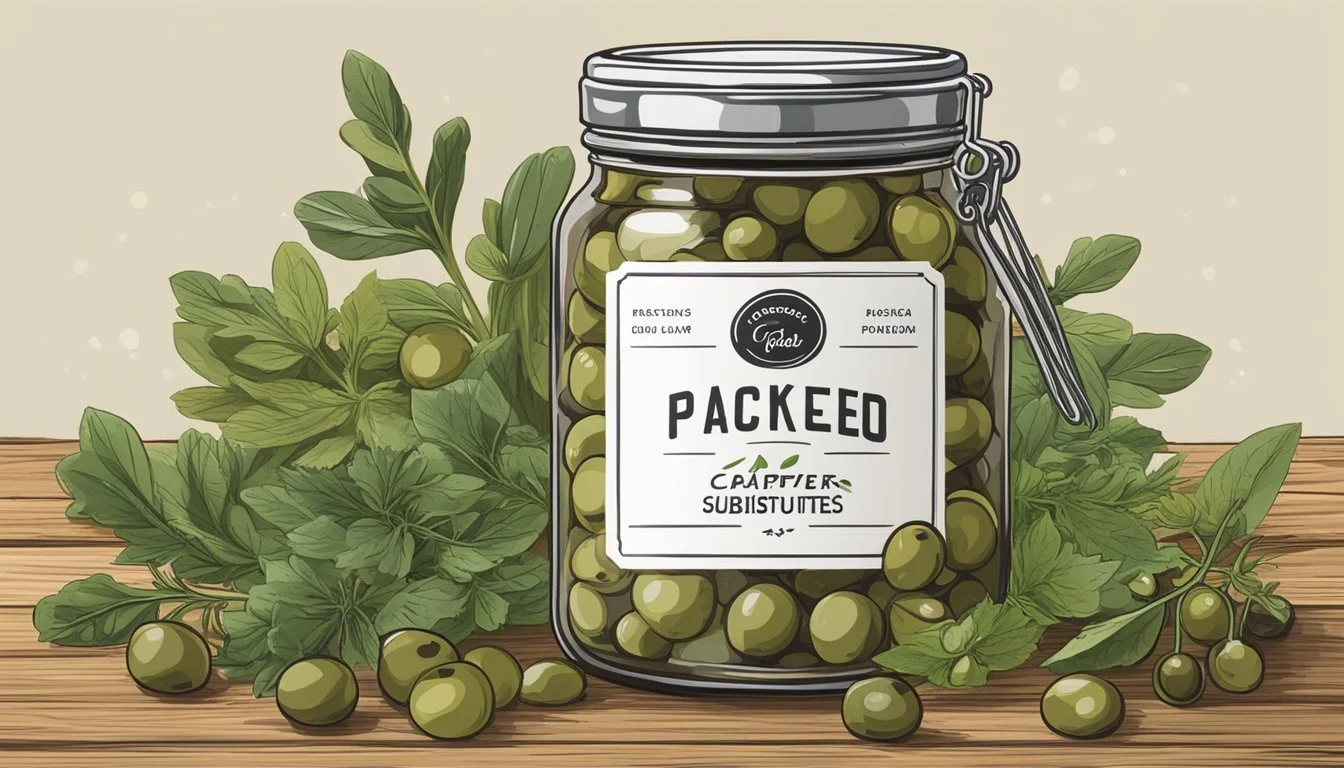Pickled Capers Substitutes
Top Alternatives for Unique Flavors
For those who delight in Mediterranean cuisine, capers are a beloved condiment that adds a unique tangy flavor to many dishes. However, sometimes substitutes are necessary, whether due to availability or personal preference. Green olives, pickled nasturtium seeds, and lemon juice can all serve as excellent replacements for capers, each imparting their own distinct tastes while still delivering that desired briny zing.
Chopped green olives match the salty and slightly bitter profile of capers, making them a versatile option for numerous recipes. On the other hand, pickled nasturtium seeds offer a peppery twist and can be used in various sauces and garnishes. Lemon or lime juice provides a citrusy alternative when caper brine is unavailable, adding a fresh tang that's particularly effective in salads and fish dishes.
By exploring these substitutes, home cooks can maintain the desired flavor profiles in their Mediterranean recipes without compromising on taste. The alternatives not only ensure a continued culinary adventure but also inspire creative twists on traditional favorites.
Understanding Capers
Capers, the unopened flower buds of the Capparis spinosa plant, are commonly used in Mediterranean cuisine to enhance the flavor of dishes with their unique taste and texture. They are especially popular in salads, fish dishes, and pasta.
What Are Capers?
Capers are small, green, unopened flower buds that grow on the caper bush (Capparis spinosa). These buds are typically harvested by hand, as the process requires precision to ensure only the best are chosen.
After harvesting, capers are dried and then pickled in brine or vinegar, which preserves them and imparts their characteristic tangy flavor. They are commonly found in Mediterranean recipes and are available in various sizes, from tiny non-pareils to larger caper berries.
Culinary Uses of Capers
Capers are versatile and can be used in numerous dishes. One of their most popular uses is as a topping on salads, where they add a tangy and slightly salty kick. They are also a classic ingredient in fish dishes, especially in Mediterranean cuisine.
Chicken piccata, a dish made with chicken, lemon, butter, and capers, highlights their ability to complement meats with their sharp flavor. In pasta, they provide an umami depth that enhances both the sauce and other ingredients. Capers are also used as a garnish or condiment to enrich sauces and spreads.
Flavor Profile and Texture
The flavor of capers is distinct and bold. They have a briny, salty, and slightly tangy taste that can be described as somewhat olive-like. This umami flavor profile makes them an excellent addition to dishes that require a burst of tanginess.
In terms of texture, capers are firm yet succulent, offering a pleasant bite. When pickled in brine, their texture becomes slightly softer but still retains a satisfying crunch. This combination of flavor and texture is what makes capers a favored ingredient in a variety of culinary applications.
Overall, capers bring a unique flavor and satisfying texture to many dishes, making them an indispensable component in the kitchen.
Choosing Substitutes for Capers
When seeking alternatives to capers, it is essential to focus on flavor, texture, and health considerations. These factors will ensure a suitable replacement in your dishes.
Substitutes Based on Flavor
Capers are known for their unique salinity, tartness, and a hint of umami. Green olives make an excellent substitute due to their similar salty and briny flavor profile. Chop them into small pieces for a more precise match.
Lemon or lime juice can replace the tartness and acidity of capers. Use these sparingly as their strong sourness might overpower other ingredients. For dishes needing both saltiness and bitterness, adding a pinch of fresh black pepper to lemon juice mimics the complex flavor of capers.
Dill pickles present another alternative though their crunchy texture might alter the dish's mouthfeel. Opt for finely chopped pickles to maintain a closer flavor resemblance.
Substitutes Based on Texture
The firm, yet tender texture of capers can be challenging to replicate. Chopped green olives, when pitted and minced, offer a similar mouthfeel. They blend easily into sauces, dressings, and garnishes without noticeable textural differences.
For a softer texture closer to what capers provide, consider using caperberries. These are the fruit of the caper bush and have a texture that mirrors capers. Another option is small pickled cucumbers, chopped finely to match the capers' size for a closer textural resemblance in recipes.
Health Considerations in Substitutes
When choosing substitutes, sodium content is critical. Capers are high in salt due to their brine. Green olives share this salinity but might be less suitable for low-sodium diets. In such cases, fresh herbs like parsley or thyme could be a better substitute for adding flavor without extra salt.
Lemon and lime juice are low-calorie options that can provide acidity and a vitamin C boost, ideal for those mindful of calorie intake. Choose substitutes mindfully to ensure they complement your dietary needs while maintaining the dish's intended flavor and texture.
Common Caper Substitutes
When cooking without capers, knowing suitable substitutes is critical. Several alternatives can offer similar salty and tangy flavors, making them excellent choices for various recipes.
Green Olives and Kalamata Olives
Green olives and Kalamata olives are among the best substitutes for capers, replacing them well in most recipes. Green olives are salty and acidic, providing a similar flavor profile. Chop them to a size comparable to capers for a better texture match.
Kalamata olives are slightly fruitier but still offer a briny taste. Use a 1:1 ratio when replacing capers with olives. Both types of olives work well in salads, pasta dishes, and tapenade.
Pickles and Pickled Vegetables
Pickles and pickled vegetables can also serve as effective substitutes. Diced pickles or pickled cucumbers offer a tart and tangy taste similar to capers. They work particularly well in tartar sauce and salad dressings.
Other pickled options include pickled onions and pickled beets, though these have a stronger flavor. Adjusting the quantity to avoid overpowering the dish is recommended. These substitutes can bring out briny and tangy notes, especially in pickled vegetable-based sauces.
Substitutes in Sauces and Dressings
For sauces and dressings, alternative ingredients can mimic the flavor of capers. Green peppercorns in brine offer a peppery and tangy note, making them a good replacement in vinaigrettes and sauces. Use them in dishes like tartar sauce or vinaigrettes.
Lemon or lime juice can also substitute for caper brine, adding acidity without overwhelming the dish. Incorporate these in salad dressings and seafood preparations.
Using Herbs and Spices as Substitutes
Herbs and spices can effectively replace capers in some recipes. Dill and thyme are notable options, providing a distinct yet complementary flavor.
For instance, 1 tablespoon of capers can be substituted with 1 teaspoon of dried thyme. Dill gives a fresh and slightly tangy taste, ideal for enhancing fish dishes and various sauces. Other herbs might not capture the salty brininess but can contribute unique flavors to the recipe.
Alternatives for Specific Dishes
Different dishes call for varying flavors, and knowing the best caper substitutes can enhance your cooking. From Mediterranean cuisine to pasta and salads, the right replacement can make a significant difference.
Substitutes in Mediterranean Cuisine
Green olives are a go-to substitute for capers when making dishes like chicken piccata or Greek salads. They offer a similar salty, tangy profile and should be chopped to match the size of capers.
Kalamata olives can also be used, particularly in recipes where a richer, more robust flavor is desired. They pair excellently with fish dishes and enhance the complexity of the meal.
Pickled redbuds or spruce tips can provide a unique twist with subtle floral notes, fitting well into the diverse flavor profiles of Mediterranean dishes.
Alternative Ingredients in Pasta Dishes
For pasta puttanesca, anchovies are excellent as they bring both saltiness and umami, mimicking the complexity that capers add to the dish. Finely chopped, they dissolve during cooking, integrating seamlessly into the sauce.
Chopped green olives serve as another viable option, bringing similar briny and salty notes that complement puttanesca sauce. Their firm texture maintains a pleasant bite.
For those who enjoy a milder substitution, nasturtium seeds offer a peppery flavor, somewhat akin to arugula, which can blend well into various pasta dishes without overwhelming other ingredients.
Picking Substitutes for Salads and Toppings
In salads like Caesar, capers can be replaced with pickled nasturtium seeds for their tangy kick. They work well sprinkled over greens or mixed into dressings, adding both flavor and texture.
Chopped green olives are another suitable substitute, particularly in salads requiring a bold, tangy element. Ensure they are evenly diced to distribute their flavor thoroughly.
For a more unusual yet delightful substitute, consider pickled redbuds, which bring a nuanced zest and visual appeal to salads and other toppings.
By choosing the appropriate substitutes for each dish, one can maintain and even enhance the intended flavors, ensuring a delicious outcome that honors the original recipe.
Non-Traditional Caper Substitutes
For those looking for alternatives to capers with unique yet complementary flavors, fruit-based and vegetable substitutes can provide unexpected but satisfying replacements.
Fruit-Based Substitutes
Fruit-based substitutes such as lemons and limes can offer a refreshing twist to dishes traditionally using capers. Lemon and lime juice can replicate the tangy brininess found in capers, making them suitable for sauces and marinades. Use lemon or lime sparingly to avoid overpowering the dish.
Preserved lemons represent another excellent fruit-based substitute. Their intense flavor and pickled quality closely mimic capers, adding depth to stews, tagines, and salads. When using preserved lemons, dice them finely to blend well with other ingredients.
Vegetable Alternatives
Vegetable alternatives include nasturtium seeds, which possess a slightly peppery and tangy flavor akin to capers. These seeds come from the nasturtium plant, and both the seeds and flowers are edible. Nasturtium seeds can be pickled, used in salads, sauces, or as a garnish.
Artichoke hearts and pickled onions also present viable options. Artichoke hearts provide a similar briny taste and can be diced to match the texture of capers. Pickled onions, with their tartness and crunch, can substitute capers in garnishes and sandwiches.
Lastly, caperberries are larger and milder than capers but offer a comparable flavor profile, making them a fitting replacement. They work well in antipasto platters and Mediterranean dishes.
Preparing and Using Caper Substitutes
When substituting capers, it's crucial to choose ingredients that can mimic their salty, tangy flavor and texture. This guide will help you with preparation tips, cooking techniques, and how to adjust your recipes effectively.
Preparation Tips for Substitutes
Chopped Green Olives: Green olives are an excellent caper substitute due to their similar salty and tangy profile. Chop them finely to replicate the size and texture of capers.
Lemon or Lime Juice: Use lemon or lime juice to substitute caper brine. About 1 teaspoon of juice can replace 1 tablespoon of capers for a tangy flavor.
Pickled Dill Pickles: Pickle slices chopped into small pieces can often match the texture of capers. They also provide a pickle-y sourness that works well in many dishes.
Cooking Techniques
Replace capers with green olives by adding them directly into the recipe at the same stage as you would capers.
For dishes requiring caper brine, like dressings or sauces, mix in lemon or lime juice to achieve a similar acidic note.
When cooking with pickled dill pickles, add them near the end of the cooking process to maintain their crunch.
White wine can also replace capers in certain recipes, particularly sauces. Add a splash and let it reduce to concentrate the flavor.
Adjusting Recipes With Substitutes
When adjusting recipes, consider the salt content of caper substitutes like green or kalamata olives and reduce additional salt in the recipe accordingly.
For recipes needing caper brine, such as salad dressings, be mindful of the acidity level. Balance any added vinegar or citrus juice with a sweetener like honey if the dish becomes too sharp.
Incorporate red or white wine carefully in dishes like piccata, as the alcohol needs to be properly cooked off.
Remember, substituting capers might slightly alter the flavor profile, so taste as you go and adjust seasoning levels to achieve a balanced result.
Pairing Flavors With Caper Substitutes
Finding the right substitutes for capers can enhance a dish beautifully, especially when the flavors are paired well. These substitutes work with various proteins, vegetarian and vegan options, as well as salads and soups, to recreate the tangy zest capers bring.
Complementing Protein Dishes
When working with protein-rich dishes like chicken piccata or fish, green olives are an ideal substitute for capers. They provide a similar salty bite and slightly bitter note. For a more unique flavor, try using pickled nasturtium seeds; their peppery taste brings an unexpected yet delightful twist to fish and chicken.
Gherkins or cornichons work wonders diced finely in sauces for seafood such as salmon or cod. Dill pickles can also be used, though their stronger vinegar profile should be balanced with milder complementary ingredients.
Accompanying Vegetarian and Vegan Options
For vegetarian or vegan dishes, artichoke hearts can mimic the texture and slight tanginess of capers, especially when marinated. Use them in pasta dishes or roasted vegetable medleys for added depth.
Green olives, chopped finely, can replace capers in vegan casseroles or tofu dishes, giving a similar flavor boost. Lemon or lime juice can be a suitable substitute in salads or as a finishing touch for roasted veggies to replicate the freshness of capers without altering the dish's overall profile.
Matching With Salads and Soups
In salads, diced gherkins or green olives can substitute capers effectively, adding their distinct tanginess and saltiness. For a fresher alternative, consider using caprberries or a small amount of lime juice, which can invigorate green salads or grain-based salads like quinoa or couscous.
For soups, pickled nasturtium seeds or a touch of lemon juice can offer that zesty pop similar to capers. These substitutes work particularly well in brothy soups where a touch of acidity can brighten the flavors without overwhelming the dish.
By carefully considering these pairings, one can achieve delightful results that rival the original capers' effect.







